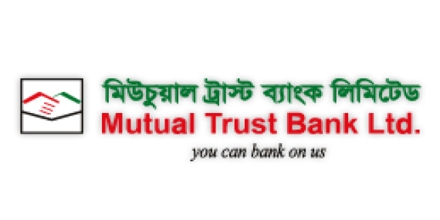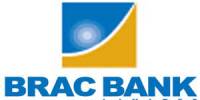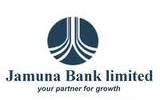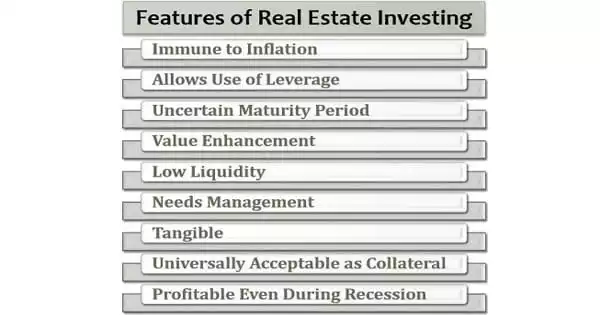Overall HR policy with special reference on Training & Development procedure of MTB
Whatever a country stands poor, less development, developing or developed; it should have the banking system to run its economy in a smooth way. Banking system is the heart of the economy of each county. Economy, monetary and fiscal all the policy directly or indirectly depend on banking system for their better implementation. Bangladesh economy has been experiencing a rapid growth since the ‘90s. Industrial and agricultural development, international trade, inflow of expatriate Bangladeshi workers’ remittance, local and foreign investments in construction, communication, power, food processing and service enterprises ushered in an era of economic activities. Urbanization and lifestyle changes concurrent with the economic development created a demand for banking products and services to support the new initiatives as well as to make channel consumer investments in a profitable manner. A group of highly acclaimed businessmen of the country grouped together to respond to this need and established Mutual trust bank Limited in September 29,1999.
Mutual Trust Bank Ltd (MTBL) is sponsored by a group of dynamic Bangladeshi Entrepreneurs, Industrialists, Educations and Professionals. Mutual Trust Bank Ltd is one of the renowned and scheduled private commercial bank of Bangladesh. MTBL aspire to be the most admired financial institution in the country, recognized as a dynamic, innovative and client focused company that offers an array of products and services in the search for excellence and to create an impressive economic value.
Important Division of MTBL (Highlighting of Human Resource Division)
In MTBL, there are remaining different types of important & key division. Those all are played as the master role for conducting the important tasks for the purpose the bank.
Those are given below:
- Human Resource Division
- Foreign Exchange Division
- ICC Division
The Function of Those Divisions:
- Human Resource Division
On the basis of the Mutual Trust Bank Ltd. the main responsibility of this departments are,
- To recruit new employee
- Transfer the employee
- To monitoring the promotion
- To provide the training
MTBL human resource department is looking for these criteria. Human resource division is depended on the branch manager. Because Human resource division don’t have any direct communication with the branch level employee. The branch manger provides the employee’s all documents to the Human recourse division. So, here favoritism might be taken place.
Different types Training Institute is also one of the part of Mutual Trust Bank Ltd for the Human Resource Division. The training institute is giving training to the newly recruit employee and if employee has needed training.
Human Resource Division
Bangladesh is one of the densely populated countries in all over the world. The number of the population is approximately 15,000000. The human beings may play as like the asset of the country. So to make the people efficient in their post we need to train them & posted them in the right place based on their skills.
One of the important parts of the organization is the Management System. Management system process is included with planning, organizing, staffing, leading, controlling. In the term of management process Human Resource Management is one of the fundamental pare. Human Resource Management involved with the process of acquiring, training, appraising, compensating employees, recruitment, screening & rewarding.
Now a day we all are familiar with the term of Human Resource Division in every sector of every single organization in Bangladesh. Without establishing this important sector anyone organization may run smoothly. This term is very much essential for every single employee those are involved in different organization.
So the every single task of HR division is very much essential for all the employees those are involved with The Mutual Trust Bank ltd in Bangladesh.
Objective of Human Resource (HR) Division of MTBL
In every organization Human Resource Division is one of the fundamental division which plays a vital role for the organization. Like every organization, in every bank sector is also like to establish the Human Resource Division for providing the effective response to the employee those is involved with that bank. Like every bank, The MTBL also establishes the Human Resource Division for the betterment of the employee of the bank. They have their own Objectives which is very unique for themselves.
The Main Objective of HR Division of MTBL is given below:
- To establish the effective banking success around the whole country.
- To make the employees efficient, knowledgeable, skilled for providing the better performance.
- To recruit the qualified & efficient person to run the organization smoothly.
- To maintain the best communications through the top level employees to the bottom level employees.
- To evaluate the employees performance as the standard level.
- To motivate the employees by providing some incentive to get the better performances.
The overall policy of Human Resource Management of MTBL
- Build up effective and efficient human through training.
- Selecting the appropriate candidate who fit the culture.
- Retain the talented employee within the organization.
- Create the atmosphere so that employee can contribute fully.
- Motivate the employees so that they can give their best effort.
- Motivate the employees and develop the employees for the future job.
- Build smooth career for the brilliant employees to train them.
- Maintain the efficient human resource inventory.
- Provide sufficient feedback of the employee for their effort. Provide incentive package both monetary and non-monitory for superb effort as well as layoff those who do not fit the culture and the norm.
Training & Development Division:
Training & Development division is one of the important & sub division of HR division of MTBL. The main object of this sub division is to assist the whole HR division of MTBL. Basically Training & Development division is work for to provide training to the employees and reach them in a develop position. The Training and Development division is provide the importance training process towards the employees so that the employees could able to learn the latest technology or the effective learning procedure to provide the excellent performance in contest with the others banks of Bangladesh. Also this division provides the training procedure for the new joining employees to build a better career with involving with MTBL. So the task of the Training & Development division is very much important to perform the whole activities of MTBL.
Recruitment & Selection Division:
Recruitment & Selection division is another important & sub division of HR division of MTBL. Like the Training & Development division it has its own objective to assist the HR division of MTBL. Recruitment is involved with the term of hiring the qualified, knowledgeable, skilled, efficient person for every single post in the organization. And selection means to post the right person to the right position of the organization. Like this theory the Recruitment & Selection division work for the HR division by hiring the efficient, qualified, skilled, knowledgeable person & posted them to the right position. The Recruitment & Selection division always tries to ensure that they assist to post the right person to the right position to get the better performance & feedback from the employees of MTBL.
Performance Evaluation Division:
Performance Evaluation division is one of the important vital sub division of HR division of MTBL. This sub division is also work for the whole HR division as like the Training & Development division and Recruitment & Selection division of MTBL. The main objective of this sub division is to ensure the best performance level identifying the performance evaluation through out the employees of MTBL. Performance Evaluation Division is work for identifying either the employees is stands on the right track or not. And also they work for identifying the performance level of the employees of MTBL. So the task of Performance Evaluation division is very much important for the HR division to identify the appropriate level of the performance of the employees of MTBL.
Training and Development
Training & Development Division:
Training & Development division is one of the important sub divisions of MTBL. This division is tried to assist the whole HR division of MTBL Different kinds of important tasks are done by this division. So the role of Training & Development division is plays a vital role for MTBL. They have their personal training institute which call MTBL training institute. They have two trainers in their institute, Mr. Naba Gopal Banik (Principal) & Syed Nazmul Haque (Officer). They also send their employee abroad for train their employee.
Meaning of Training & Development:
Training and development is a continual process of helping employees perform at a high level. It includes orientation activities that inform employees of policies & procedures, educate them in job skills, & develop them for future advancement. It is a part of Human Resource Management. There are different types of training process through which a company can improve their employee’s performance & can get better output.
The importance of training & development program to the organization cannot be overemphasized. Through recruitment & placement good employees can be brought into the company. Then they need continual education & development. So that both of their needs & the objectives of the firm can be achieved. Training and development is a broad area which is included orientation employees, training processes, relationship between training & learning, training needs, different types of training methods, management development, performance appraisal.
Training and development managers and specialists conduct and supervise training and development programs for employees. Increasingly, management recognizes that training offers a way of developing skills, enhancing productivity and quality of work, and building worker loyalty to the firm, and most importantly, increasing individual and organizational performance to achieve business results. Training is widely accepted as an employee benefit and a method of improving employee morale, and enhancing employee skills has become a business imperative. Increasingly, managers and leaders realize that the key to business growth and success is through developing the skills and knowledge of its workforce.
Other factors involved in determining whether training is needed include the complexity of the work environment, the rapid pace of organizational and technological change, and the growing number of jobs in fields that constantly generate new knowledge, and thus, require new skills. In addition, advances in learning theory have provided insights into how adults learn, and how training can be organized most effectively for them.
Training managers provide worker training either in the classroom or onsite. This includes setting up teaching materials prior to the class, involving the class, and issuing completion certificates at the end of the class. They have the responsibility for the entire learning process, and its environment, to ensure that the course meets its objectives and is measured and evaluated to understand how learning impacts business results.
Training specialists plan, organize, and direct a wide range of training activities. Trainers respond to corporate and worker service requests. They consult with onsite supervisors regarding available performance improvement services and conduct orientation sessions and arrange on-the-job training for new employees. They help all employees maintain and improve their job skills, and possibly prepare for jobs requiring greater skill. They help supervisors improve their interpersonal skills in order to deal effectively with employees. They may set up individualized training plans to strengthen an employee’s existing skills or teach new ones. Training specialists in some companies set up leadership or executive development programs among employees in lower level positions.
These programs are designed to develop leaders, or “groom” them, to replace those leaving the organization and as part of a succession plan. Trainers also lead programs to assist employees with job transitions as a result of mergers and acquisitions, as well as ethnological changes. In government-supported training programs, training specialists function as case managers. They first assess the training needs of clients and then guide them through the most appropriate training method. After training, clients may either be referred to employer relations representatives or receive job placement assistance.
Planning and program development is an essential part of the training specialist’s job. In order to identify and assess training needs within the firm, trainers may confer with managers and supervisors or conduct surveys. They also evaluate training effectiveness to ensure that the training employees receive helps the organization meet its strategic business goals and achieve results.
Depending on the size, goals, and nature of the organization, trainers may differ considerably in their responsibilities and in the methods they use. Training methods include on-the-job training; operating schools that duplicate shop conditions for trainees prior to putting them on the shop floor; apprenticeship training; classroom training; and electronic learning, which may involve interactive Internet-based training, multimedia programs, distance learning, satellite training, other computer-aided instructional technologies, videos, simulators, conferences, and workshops.
The only objective of introducing these training & development processes is to introduce the people with it so that they can use it & can realize the importance of these processes in Bangladesh.
Training Approach
There are three approaches to training:
Traditional approach:
“In this approach, the training staff designs the objectives, contents, teaching techniques, assignments, lesson plans, motivation, tests, and evaluation. The focus in this model is intervention by the training staff (Rama)”.
Experiential approach:
“In this approach, the trainer incorporates experiences where in the learner becomes active and influences the training process. Unlike the academic approach inherent in the traditional model, experiential training emphasizes real or simulated situations in which the trainees will eventually operate. In this model, the objectives and other elements of training are jointly determined by the trainers and trainees. Trainers primarily serve as facilitators, catalysts, or resource persons (Etling)”.
Performance-based approach:
“In the performance-based approach to training, goals are measured through attainment of a given level of proficiency instead of passing grades of the trainees. Emphasis is given to acquiring specific observable skills for a task. This performance-based teacher education (PBTE) model, developed by Elam, is mostly task or skill centered and is also applicable to non-formal educational organizations such as extension (Bowen)”.
Training and Development
Training & Development Division:
Training & Development division is one of the important sub divisions of MTBL. This division is tried to assist the whole HR division of MTBL Different kinds of important tasks are done by this division. So the role of Training & Development division is plays a vital role for MTBL. They have their personal training institute which call MTBL training institute. They have two trainers in their institute, Mr. Naba Gopal Banik (Principal) & Syed Nazmul Haque (Officer). They also send their employee abroad for train their employee.
Meaning of Training & Development:
Training and development is a continual process of helping employees perform at a high level. It includes orientation activities that inform employees of policies & procedures, educate them in job skills, & develop them for future advancement. It is a part of Human Resource Management. There are different types of training process through which a company can improve their employee’s performance & can get better output.
The importance of training & development program to the organization cannot be overemphasized. Through recruitment & placement good employees can be brought into the company. Then they need continual education & development. So that both of their needs & the objectives of the firm can be achieved. Training and development is a broad area which is included orientation employees, training processes, relationship between training & learning, training needs, different types of training methods, management development, performance appraisal.
Training and development managers and specialists conduct and supervise training and development programs for employees. Increasingly, management recognizes that training offers a way of developing skills, enhancing productivity and quality of work, and building worker loyalty to the firm, and most importantly, increasing individual and organizational performance to achieve business results. Training is widely accepted as an employee benefit and a method of improving employee morale, and enhancing employee skills has become a business imperative. Increasingly, managers and leaders realize that the key to business growth and success is through developing the skills and knowledge of its workforce.
Other factors involved in determining whether training is needed include the complexity of the work environment, the rapid pace of organizational and technological change, and the growing number of jobs in fields that constantly generate new knowledge, and thus, require new skills. In addition, advances in learning theory have provided insights into how adults learn, and how training can be organized most effectively for them.
Training managers provide worker training either in the classroom or onsite. This includes setting up teaching materials prior to the class, involving the class, and issuing completion certificates at the end of the class. They have the responsibility for the entire learning process, and its environment, to ensure that the course meets its objectives and is measured and evaluated to understand how learning impacts business results.
Training specialists plan, organize, and direct a wide range of training activities. Trainers respond to corporate and worker service requests. They consult with onsite supervisors regarding available performance improvement services and conduct orientation sessions and arrange on-the-job training for new employees. They help all employees maintain and improve their job skills, and possibly prepare for jobs requiring greater skill. They help supervisors improve their interpersonal skills in order to deal effectively with employees. They may set up individualized training plans to strengthen an employee’s existing skills or teach new ones. Training specialists in some companies set up leadership or executive development programs among employees in lower level positions.
These programs are designed to develop leaders, or “groom” them, to replace those leaving the organization and as part of a succession plan. Trainers also lead programs to assist employees with job transitions as a result of mergers and acquisitions, as well as ethnological changes. In government-supported training programs, training specialists function as case managers. They first assess the training needs of clients and then guide them through the most appropriate training method. After training, clients may either be referred to employer relations representatives or receive job placement assistance.
Planning and program development is an essential part of the training specialist’s job. In order to identify and assess training needs within the firm, trainers may confer with managers and supervisors or conduct surveys. They also evaluate training effectiveness to ensure that the training employees receive helps the organization meet its strategic business goals and achieve results.
Depending on the size, goals, and nature of the organization, trainers may differ considerably in their responsibilities and in the methods they use. Training methods include on-the-job training; operating schools that duplicate shop conditions for trainees prior to putting them on the shop floor; apprenticeship training; classroom training; and electronic learning, which may involve interactive Internet-based training, multimedia programs, distance learning, satellite training, other computer-aided instructional technologies, videos, simulators, conferences, and workshops.
The only objective of introducing these training & development processes is to introduce the people with it so that they can use it & can realize the importance of these processes in Bangladesh.
















